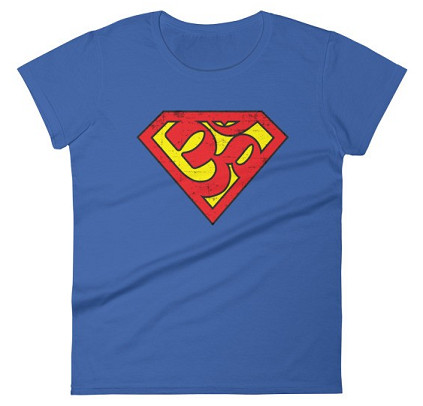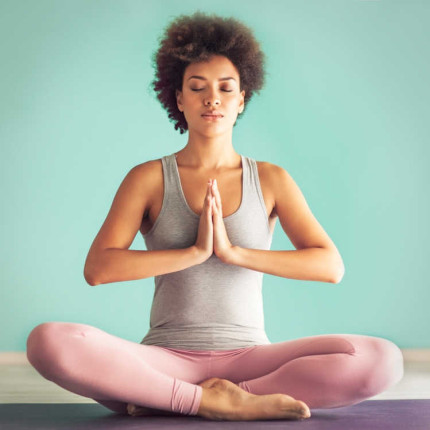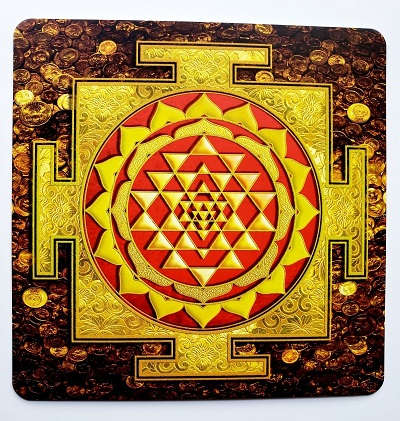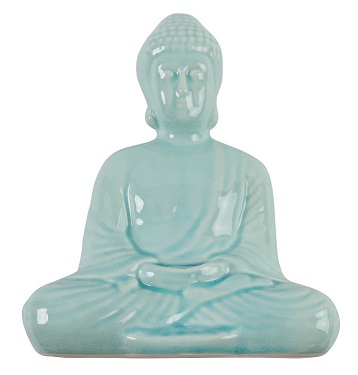Yoga Lifestyle Marketplace
Everything You Need to Know About Asana
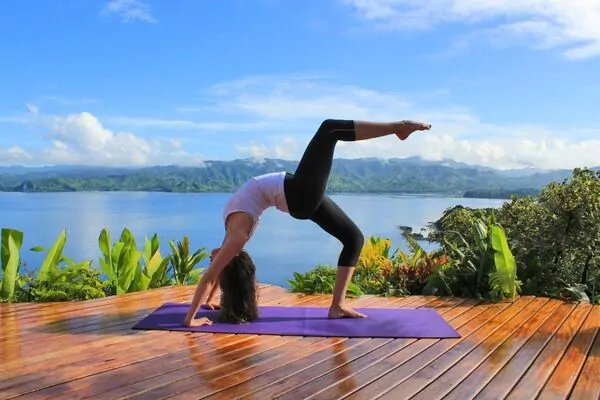
Asana
Yoga asana or postures are systematic exercises carried out for the purpose of keeping the mind and body fit for spiritual purposes. Asanas are not just physical exercises as generally understood; no doubt the asanas help in nourishing the entire body and all the body systems, but the purpose of asanas is entirely different. Sitting in a steady and comfortable posture and keeping the mind from running outwards requires the body to be in an excellent condition . The flow of blood should be normal and there should be no blockage any where in the body. Also once the divine currents start getting activated during meditation a weak body cannot sustain them, a feeble body and mind may not be able to reach the state of super consciousness.
There are as many asana as the amount of species present. For the purposes of strengthening the body there are about hundred odd asana in vogue. Out of these hundred odd asana only about thirty asana are really practiced. Asana, Mudra and Bandha fall under the same category as yogic exercises but their performance is for specific purposes. The following are the benefits of asana and pranayama:
(a)It keeps the body and mind fit and healthy.
(b)Flexibility of body and muscles is maintained.
(c)It keeps many diseases away; the visit to the doctor becomes rare.
(d)One feels light; there is increased power of concentration.
(e)The exercises stimulate mental and psyche faculties resulting in greater mental capabilities to work for long durations.
(f)Digestive system, circulatory system and loco-motor systems are energized and an improvement is noticeable in a short span of time.
(g)It helps in weight reduction. Blood cholesterol levels can be brought down and reasonable limits maintained.
(h)It helps in awakening of the Kundalni.
(i)Many diseases are cured by the regular practice.
Warning: Healthy people may start practice of simple asana only on their own. People with cardiac, spinal, kidney problems, hypertension and head injuries should not attempt asana on their own, they must only learn and perform under expert guidance.
There are certain exercises, which retard the ageing process of the body, they are very effective but again can only be attempted under supervision. All yogic exercises make one look young and preserve health but there are some specific exercises that are to be performed only if recommended by ones Guru.
Yoga asana are of two kinds. Postures required for sitting in meditation and exercises for maintenance of good health, strength and increased energy levels. Yoga Asanas to be performed, for the awakening of the Kundalni power, are at a slight variation from normal asanas.
Padma asana, Siddha asana, Swastik asana and Sukh asana are recommended for meditation. One should be able to sit in a posture for minimum of one hour and increase the time to three hours. Initially one must try to sit for some time in a posture and can practice the same while having meals, watching T V or studying etc.
(a) Padma asana. Lotus position . This is the best posture for meditation. Sit on the ground. Straighten both the legs. Place the left foot on the right thigh; gradually bring the right foot on the left thigh. One may feel a bit uncomfortable in the beginning, slowly with practice one can sit in this position for long periods. This asana also balances the flow of blood and helps in maintaining normal cholesterol level.
(b) Siddha asana. This asana is considered best for attainment of extra sensory perceptions. Straighten both the legs. Bring the left heel under the perineum. Now bring the right foot and place it on the left foot, the ankle of the right foot should be on the top of the ankle of the left foot. Place the toes in-between the legs. Some schools of thought do not recommend this asana for ladies but its experienced that no negative effects take place on a female body. It helps in maintaining of Brahmacharya (Continence).
(c) Swastik asana. This asana is easy and used for sitting for very long periods. Bring the left foot in-between the space behind the right knee; bring the right foot in the similar place behind the left knee.
(d) Sukh asana. Any comfortable cross-legged position.
While performing the above-mentioned asana one has to ensure that one sits with the back erect and absolutely straight. One must not lean forward or backward.
Asana is best learnt under expert guidance. How ever the following asana can be performed in the sequence as enumerated. Before attempting the asana one must adhere to the following rules:
Rules for performance of asana
(a)Warm up. Stretch a little. Perform a few side jumps. Steady the breath.
(b)Do not over stretch or strain any part of the body. Progress has to be made slowly and steadily.
(c)Do not listen to music or songs while performing the asana.
(d)There should be a gap of minimum four hours between meals and asana. Asana is best performed in the morning on an empty stomach.
(e)One should not perform the asana mechanically. One should be deliberate and one should watch the posture during performance.
(f)One should avoid doing asana during sickness.
(g)Ladies should avoid asana during the menses. However light exercises may be performed.
(h)One must perform asana in a well-ventilated room free from dust and smoke.
(i)One should not perform asana on the floor; thick blanket or mat may be used. Spongy surfaces are to be avoided. The base should be firm.
(j)One must not perform asana in air-conditioned rooms. The body must be allowed to perspire naturally. One must not expose ones self to cold air or drink cold water immediately after performance of yoga asana.
(k)One must not take a bath for at least half an hour after the exercises. However one can perform asana after taking a bath.
(l)One must feel light and energetic after the exercises, if not, there is a problem somewhere. One has to consult an expert.
One must not strain in any asana. Asana is to be performed with cheer without any stress and effortlessly. Breathing should not be labored.
Yoga asana are a very systematic way of performing exercises. First few days are to be utilized for stretching and strengthening the muscles. The breathing during the performance of asana should be gentle and too much strain should be avoided. Young and healthy people can do strenuous asana. The asana given in succeeding paragraphs is meant for persons with a healthy body:
Implore God, recite a little prayer before beginning the asana. Pray to the Lord for good health and longevity. When one becomes proficient in asana one should repeat mantras or prayers during the performance of the asana.
(a) Warm up. 2-3 minutes. Get the breathing to normal. Take a few deep breaths.
(b) Palm Tree pose. Stand erect, feet together, distribute weight of the body on both the feet. Interlock the fingers raise the arms above the head with palms upwards. Fix the gaze, above, on a point above the head on the sky or the ceiling. Raise the heels up to the toes, stretch the whole body upwards, do not loose balance, hold the breath and remain in this pose for a few seconds. Practice 3 to 5 rounds. This asana helps in stretching the spine, clears congestion of nerves along the spine. It stretches the abdominal muscles and the rectal region it can be profitably performed during the initial months of pregnancy.
(c) Swaying Palm Tree Pose. Stand erect, feet about 2-3 feet apart, interlock the fingers and inhale, raise the hands above the head. Bend left from the waist exhaling the breath, inhale and become straight again. Repeat the process towards the right side. Practice 5 rounds. During the performance of the asana the awareness should be on the stretching points in the body the eyes should be closed. This exercise loosens the side muscles and gets them in shape.
(d) Waist Rotating Pose. Stand with the feet about 3 feet apart. Raise the arms parallel to the ground at the shoulder level. Take a deep breath, exhale and twist the body towards the left, get the right hand on the left shoulder, bring the left hand on the back as if wrapped. Look over the left shoulder, try and see your right heel. Repeat the process on the other side. One should not strain. The awareness should be in the abdominal area or the stretch points. This pose helps in removing the stiffness of the back; it relaxes the muscles along the spine and gives a feeling of lightness. Practice 5 rounds of this asana.
(e) Triangle Pose. (Trikon Asana) Stand with the feet 3-4 feet apart. Turn the left foot towards the left side, bring the arms sideways and raise them to shoulder level, bend left, do not allow the body to lunge forward or backward, try and touch the left toe with the left hand bending the left leg slightly. The right hand should be brought straight above the head and one must watch the middle finger of the right hand. Remain in the position for 3-5 seconds. Repeat the same in the opposite side. Exhale while bending, inhale while straightening, one should hold the breath at the final pose. This exercise if performed regularly helps in reduction of fat from the waist. It stimulates appetite and helps in removal of constipation.
(f) Hand to Foot Pose. (Padhasta Asana) Bend forward till the fingers touch the ground. Do not over stretch. Gradually the stretching increases. Exhale while bending forward, and keep the knees straight. Keep the awareness in the pelvic region. People sufferings from lumbago or other back problems should not stretch completely. This pose tones up the abdominal muscles, reduces excessive weight and helps in proper bowel movements.
(g) Lie down and relax for a while.
(h) Shoulder Stand Pose. (Sarvang Asana) Lie on the back, have the feet together and the legs straight. Place the hands alongside the body with hands facing down. Gradually raise the legs to a vertical position, press the hands on the ground slowly lift the spine from the floor, raising the trunk to a vertical position. Turn the palms, bend the elbows and place the hands behind the ribcage to support the back. Press the chin to the chest. Relax the whole body in the final pose. Concentrate on the throat. The beginners can perform the asana for a few seconds initially and increase it to 3-5 minutes. One can inhale and exhale comfortably. This asana stimulates the thyroid gland thereby nourishes the digestive, nervous and the circulatory systems. It tones up reproductory organs. Nerves all over the body are nourished; flexibility of the neck and the vertebrae is improved. It is an anti-gravitational asana thereby improves blood supply to the heart. People suffering from hypertension, heart problems, problems of the liver and spleen, should not do this asana. Performance of this asana can aggravate nose bleeding or nerve problems of the eyes. This asana is good for almost each and every aspect of physical and mental aspect.
(i) Fish pose. (Matsya Asana) Sit in padmaasana. Those who cannot sit in padma asana may sit in any other pose. Relax the body and muscles, slowly bend backwards and lie down. Hold the left shoulder with the right hand and the right shoulder with the left hand behind the neck. This is also a counter pose to Shoulder Stand. Breathe deeply; take about 5-10 deep breaths. Keep the awareness on the abdomen, chest or the breath. This asana is good for people who suffer from bronchitis and asthma as it stretches the lungs and deep respiration cleans the lungs. It also removes certain defects of the reproductory system, it strengthens the stomach and the abdominal muscles help alleviate constipation.
(j) Plough Pose. (Hal Asana). Lie straight, keep the feet together, slowly lift the legs, raise the buttocks bring the legs over the head, gradually try and touch the ground with the toes. Do not strain, those who have a potbelly or rigid muscles along the spine will take some time to develop the desired flexibility. In the final pose try and touch the chest with the chin. One can adjust ones breathing in the pose. One should keep ones awareness on ones back or the thyroid gland during this pose. This asana is extremely effective in activating the digestive system. Kidneys and viscera are revitalized. The liver is energized and the immune system is improved and strengthened. People suffering from cervical spondalitis, slipped disc, sciatica or any other problem of the spine should not practice this asana.
(k) Back Stretching Pose. (Paschimottanasana) Sit down with legs stretched and feet together. Gradually bend forward, slide the hands and arms forward along the legs. Try to hold the toes with the hands; gradually keep exhaling this will help in stretching further. Finally place the nose in-between the knees. Do not strain, remain in this position as long as one feels comfortable. One may perform 3-5 rounds. One can slowly increase the time to five minutes; those people who can do this asana for more than three minutes need not repeat it often. During the asana one should fix ones mind on the stomach or abdomen. This asana tones up the entire abdomen and pelvic region. It removes excessive weight in the abdominal region; it stimulates the liver, spleen, kidneys and adrenal glands. It is helpful in menstrual disorders, diabetes, kidney complaints and constipation. People who suffer from lumbago or sciatica should not perform this asana.
(l) Head to Knee Pose (Janu Sirhasana) This asana is like the Paschimottanasana. Sit straight, stretch both the legs, bend the right leg and place the heel near the perineum. Hold the left foot with both the hands and try to bring the forehead down and touch the knee. Repeat it similarly on the other leg. The benefits etc are the same as in case of Paschimottanasana. Remember that in case of both these asana if one cannot bend forward completely one may bend and hold any part of the leg as felt comfortable.
(m) Camel Pose. (Ushtrasana) Kneel on the mat; bring the toes together and separate the heels, heels should be facing outwards. Lower the buttocks and sit on the lower legs. (Vajraasana). Relax a while in Vajraasana. Now stand on the knees, feet may be together or separate as comfortable. Slowly bend backward. First hold the left heel then the right heel. Do not strain. Bend the back and head, push the abdomen forward, and try to relax the whole body. Try to retain the pose as long as comfortable. Breathe normally through out this asana. Practice this once or twice daily. This asana is beneficial for digestive and reproductory system. The Back is fully stretched and spinal nerve energized.
(n) Hare Pose. (Shashankasana) Sit in Vajraasana. Place the palms on the thighs. Relax, keep the back and head straight. Inhale and raise the arms over the head parallel to the shoulders, slowly exhale and bend forward, the arms and the forehead should touch the ground. Time of this asana can be slowly increased and breathing can be done normally in the final posture. This asana should not be performed by people suffering from vertigo or hypertension. This asana is extremely beneficial for both male and female reproductory organs. It regulates the functioning of the adrenal glands. This pose is very good to control anger. It is very cooling to the brain and relaxing.
(o) Cobra Pose. (Bhujangasana ) Lie down flat on the stomach. Keep the legs and feet together, place the palms on the floor little away from the shoulders. Relax the body and slowly raise the head, neck and shoulders. Straighten the elbows and raise the trunk as high as possible. In the final pose the pubic bone must remain in contact with the floor. The Straightening of the arms and touching of the pubic bone with the floor will depend upon the flexibility of spine, on can adjust according to ones comfort. During the posture ones awareness should be upon the back, the breathing should be normal. This asana is good for menstrual disorders and tones up the reproductive organs in a female body. It can relocate a slip disc. It keeps the spinal area flexible and healthy.
(p) Bow Pose. (Dhanurasana ) Lie down flat on the stomach with legs joined, bend the knees and raise the legs, take the arms towards the feet and hold the ankles. Keep the arms straight and stretch the legs, allow the back to bend backwards as much as possible. The legs maybe kept together or separated. Hold the final position as long as possible do not be uncomfortable. One must inhale while starting the pose, retain the breath in the final pose and exhale when returning to the start position. This asana is beneficial for the respiratory system, digestive system and reduces fat. People suffering from cardiac ailments, high blood pressure and hernia should not do this asana.
(q) Wind Release Pose. (Pawan Mukta Asana ) Lie down on the floor, fold the legs and bring them close to the chest. Encircle the legs with the arms as if hugging the legs, interlock the fingers over the legs. Breathe normally, slowly raise the head towards the knees, and keep it there for a few seconds. Bring the head down and release the legs. One can perform this asana for a long time. This asana is very useful for relief from wind formation in the abdomen. This asana also tones up the abdominal muscles and reduces fat. People with heart problems should not practice this asana.
(r) Corpse Pose. (Shavasana ) Lie flat on the back with the legs straight, palms facing upwards. Let the body be as comfortable as possible. The head and back should be in a straight line. Close the eyes and watch your breath for some time, the breath will become slower and subtler. Mentally generate the feeling of relaxation in the whole body and mind. Slowly take your mind to your feet; now gradually focus your mind on the toes, soles, ankles, and complete feet. Calf muscles, knees, thighs, hand hip joints. Groin, lower abdomen, lower back, navel region, and chest. Shoulder, upper arms, elbow, lower arms, hands, complete arms. Upper back. Neck, chin, lower lip, upper lip, cheeks, ears, eyes, nose, forehead, upper head, and back of the head. There would be a tendency to fall asleep during this practice. One must avoid falling asleep. Performance of this pose for about 5 minutes makes one fresh and light. One can practice this in the office or before sleeping. Anyone can practice this pose and feel good and cheerful.
(s) Miscellaneous. Shirsa Asana (Head standing pose.) Chakra Asana (Wheel Pose). Ardha Matsendrasana (Half spinal twist). These asanas are important but learn them under supervision .
The asana mentioned above are just a few of the asana; the practice of these asana as given out is adequate for maintenance of good health. Men and women may in addition practice some bend stretches and squats (without weights) for strengthening of arms and the thighs. Rolling of wrists inwards and outwards can also be used for making the arms strong. Weight lifting and asana do not blend together certain complications can develop.
Beauty Youth Asanas . It is good to retain the youth both in the body and the mind. This is the desire of most of the people all over the world. There are special asanas and allied activities, which help a being to perform greater work with the body and mind until a very old age. One feels energetic and cheerful. There are asanas and pranayama and some other disciplines specific for retention of youthful looks and explicit for this purpose. These asanas assist in strengthening of body muscles, nerves and toning the skin and keeping the wrinkles away well past the prime of youth. One can retain strength and a good figure for a very long time. These asana etc are not discussed here, as they are specific for each individual depending on tattva predominance, texture and tone of the skin, age and many other factors. Since they can only be practiced under supervision with strict diet control it is no use discussing them here, as wrong performance may not get the desired results.
There are certain sets of asanas for this purpose; these are not common and generally not available freely in scriptures. For toning up the skin and its contraction each person has to be given specific sets that may not suit another person hence they have not been discussed at all.
Normal asana also help in this respect to a great extent one can keep practicing those till such time one can learn these.
Old Age Asana. Interestingly a fit body can perform most of the asanas at any age. Those who are not in prime health can practice light asanas, which can be learnt from any yoga instructor. These can be assimilated in a short duration and practiced alone thereafter. These asanas will help in strengthening the body and maintaining agility. It is experienced that people in old age suffering from arthritis and rheumatoid and many other problems have immensely benefited from yoga exercises.
Recent Blogs
- Tips for Caregivers Who Want More from Their Yoga Regimen (Hint: There’s an App for That!)
- Everything You Need to Know About Asana
- Almost every world leader has discussed yoga with me: Narendra Modi
- Why celebrities, CEOs and politicians make meditation part of their daily routine
- History and evolution of Yoga

